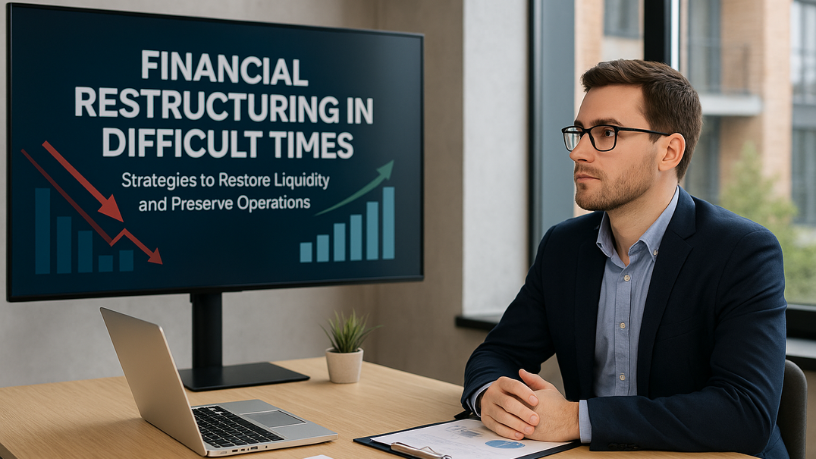Financial restructuring in difficult times has become an indispensable resource for companies facing sharp revenue declines or cash flow challenges. According to Carlos Eduardo Rosalba Padilha, the process is not limited to isolated adjustments but involves a set of structured measures to restore liquidity and ensure business continuity. More than simply cutting costs, it requires reassessing priorities, renegotiating obligations, and redesigning the business model in pursuit of efficiency.
In this context, business survival depends on a thorough financial analysis and the adoption of swift yet consistent measures. Transparency is essential, as partners, creditors, and employees must understand the company’s direction. When well executed, restructuring also prepares the organization to grow on stronger and more sustainable foundations in the future. Learn more below:
Financial restructuring and its diagnosis: the first step toward recovery
Every restructuring process must begin with a detailed diagnosis of the financial situation. Mapping assets, liabilities, and fixed and variable costs makes it possible to identify the main bottlenecks affecting cash flow. The analysis should go beyond numbers, encompassing contracts, average collection periods, and labor or tax obligations. Without this initial “X-ray,” any measure risks being only a temporary fix that fails to address the root causes of imbalance.
In addition to examining the debt structure, it is necessary to understand which areas of the company generate value and which consume resources disproportionately. In this process, indicators such as operating margin and current liquidity ratio are valuable tools. As Carlos Padilha points out, a well-prepared diagnosis brings clarity to prioritizing actions, enabling managers to make informed decisions, reduce risks, and increase the effectiveness of the recovery plan.

Strategies to preserve liquidity in the short term
Once the diagnosis is complete, the priority is to preserve liquidity. Debt renegotiation with creditors, banks, and suppliers is an effective measure to ease immediate cash flow pressures. Extending deadlines, reducing interest rates, and lengthening payment schedules are alternatives that prevent operational interruptions. At the same time, the company can adopt internal cost-control measures, such as reviewing service contracts, freezing nonessential expenses, and optimizing inventory.
The sale of non-strategic assets is also a common practice in restructuring processes. Idle machinery, underutilized real estate, and even stakes in side businesses can be liquidated to reinforce cash flow. According to Carlos Eduardo Rosalba Padilha, this strategy must be applied with caution to ensure that essential revenue-generating assets are preserved. The liquidity achieved allows the company to meet immediate commitments and keep operations running.
Long-term planning and governance in restructuring
Although emergency measures are necessary, restructuring will only have lasting effects if accompanied by long-term planning. This includes redefining strategic goals, improving corporate governance, and strengthening communication with stakeholders. The creation of medium- and long-term scenarios with realistic projections helps guide decisions and measure results. Discipline in monitoring indicators and adjusting strategies is essential to keep the company on a sustainable path.
Governance plays a central role in this process, as it ensures that decisions are made with responsibility and transparency. As Carlos Padilha emphasizes, governance practices strengthen the confidence of investors, clients, and suppliers, reducing perceived risk and increasing the likelihood of accessing credit or working capital. In this way, restructuring ceases to be merely an emergency response and becomes a foundation for the continuity of business growth.
Restructuring as an opportunity for strengthening
In summary, financial restructuring should be viewed as a process of learning and transformation. More than just adjusting debts, it enables companies to rethink management models, optimize processes, and consolidate a culture of efficiency. According to expert Carlos Eduardo Rosalba Padilha, the key lies in combining immediate cash-preservation measures with a structured long-term plan. When well executed, financial restructuring paves the way for companies to become stronger and more sustainable.
Author: Bergezin Vuc







